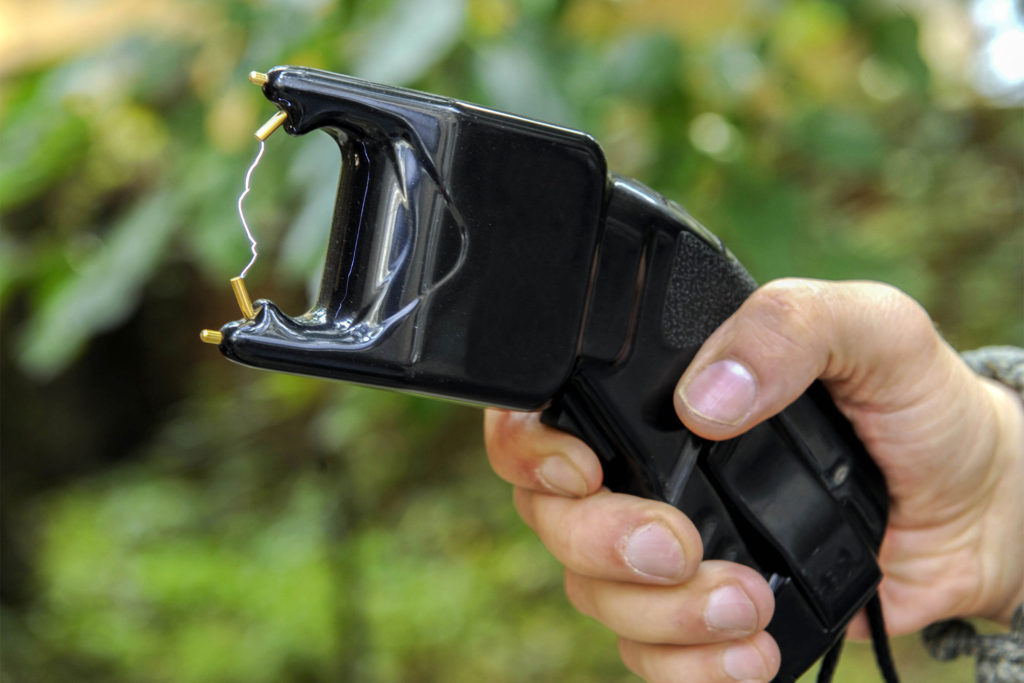Written By Caleb Angell
Introduction
In a recent decision, United States District Judge David N. Hurd held that New York’s taser and stun gun ban, codified as New York Penal Law § 265.01(1), was in violation of the Second Amendment. Judge Hurd’s decision in Avitabile v. Beach follows a string of recent decisions across the country in the wake of the United States Supreme Court’s decisions in D.C. v. Heller, McDonald v. Chicago, and Caetano v. Massachusetts, which have found that tasers and other electric arms are “bearable arms” subject to Second Amendment Protections. As a result, several courts have held that blanket bans on electric arms could not be justified under the asserted state interest and have also begun to offer greater legal protections to those who wish to carry them for self-defense purposes.
The Decision
Avitabile v. Beach arose out of a lawsuit filed by Matthew Avitabile, a resident of Schoharie County, New York, who wanted to buy a taser for self-defense purposes in his home. Mr. Avitabile sued New York State Police Superintendent George Beach, seeking declaratory judgment “that New York’s total ban on the civilian possession of tasers and stun guns violates the Second Amendment.” Although Mr. Avitabile owns several firearms, he filed suit because of his desire to “arm himself with a non-lethal weapon,” and out of his belief that “lethal force should be a last resort” when it comes to self-defense.
In his decision, Judge Hurd found that New York’s electric arms ban implicated “Avitabile’s core constitutional right as a law-abiding citizen to protect himself in his own home with a weapon commonly used for that purpose.” Judge Hurd also wrote that New York’s public safety rationale for the taser ban was “particularly hard to square with its suggestion . . . that Avitabile should just go out and buy a handgun, or perhaps a few more shotguns or rifles, if he wants to better protect himself,” given the far deadlier nature of firearms. While Judge Hurd stated that “New York’s sweeping prohibition on the possession and use of tasers and stun guns by all citizens for all purposes, even for self-defense in one’s own home, must be declared unconstitutional,” he also explained that his ruling did not “foreclose the possibility that some restriction(s) on the possession and/or use of tasers and stun guns would be permissible under the Second Amendment.”
Growing Trend of Electric Arms Legalization
In 2011, seven states outlawed the possession of electric arms. However, by operation of Judge Hurd’s decision in Avitabile, New York became the fifth of those seven states in which the possession of electric arms has become legalized. These developments were prompted by the Supreme Court’s ruling in McDonald in 2010, when it held that Second Amendment protections apply to the states. Even more recently, in Caetano, the Supreme Court signaled in a brief, unanimous decision that Second Amendment rights likely extend to electric arms.
In Caetano, the Supreme Court rejected the Massachusetts Supreme Judicial Court’s rationale behind its conclusion that Massachusetts’s electric arms ban was constitutional. The Supreme Judicial Court had concluded that the ban was constitutional because electric arms (1) “were not in common use at the time of the Second Amendment,” (2) were “unusual” weapons because they are “a thoroughly modern invention,” and (3) were not “readily adaptable” to military use. The Supreme Court rejected all three rationales for the ban’s constitutionality as clear contradictions of its Second Amendment precedent.
In his concurrence in Caetano, Justice Alito cautioned that since “[c]ountless people may have reservations about using deadly force, whether for moral, religious, or emotional reasons—or simply out of fear of killing the wrong person,” courts “should not be in the business of demanding that citizens use more force for self-defense than they are comfortable wielding.”
Thus, in the past few years following McDonald, New Jersey, Wisconsin, Michigan, Massachusetts, and now New York, have either repealed their electric arms bans or had them struck down as unconstitutional, which leaves Hawaii and Rhode Island as the only remaining states with electric arm bans. However, even those bans are unlikely to remain in effect for much longer, as lawsuits are already in progress challenging their constitutionality. Moreover, both statutes may be destined for preemptive legislative repeal due to pending legislation proposing amendments to them.
Conclusion
The almost universal legalization of electric arms for self-defense across the United States reflects the willingness of both state and federal courts, as well as state legislatures, to extend Second Amendment guarantees to weapons invented in the modern era, at least with regard to newly invented non-lethal weapons. As technological developments in the self-defense industry continue, it will be interesting to observe whether further innovation will continue to warrant Second Amendment protections.
Sources
Avitabile v. Beach, No. 1:16-CV-1447, 2019 U.S. Dist. LEXIS 47506 (N.D.N.Y. Mar. 22, 2019).
Chris Carola, Judge says New York’s stun gun ban is unconstitutional, Associated Press (Mar. 22, 2019).
Caetano v. Massachusetts, 136 S. Ct. 1027 (2016).
Eugene Volokh, Right to Possess Stun Guns in N.Y., Right to Carry Them in Illinois, reason.com (Mar. 25, 2019).
H.R. 1473, 30th Leg. (HI 2019).
McDonald v. Chicago, 561 U.S. 742 (2010).
People v. Webb, No. 122951, 2019 Ill. LEXIS 439 (Ill. Mar. 21, 2019).
People v. Yanna, 824 N.W.2d 241 (Mich. Ct. App. 2012).
Ramirez v. Commonwealth, 94 N.E.3d 809, 810 (Mass. 2018).
Sarah Doiron & Shiina LoSciuto, RI Rep. reintroduces bill allowing stun gun ownership, WPRI.com (Apr. 18, 2018).
State v. Rivera, 716 S.E.2d 859, 863 n. 2 (N.C. Ct. App. 2011).
Photo courtesy of The New York Post

